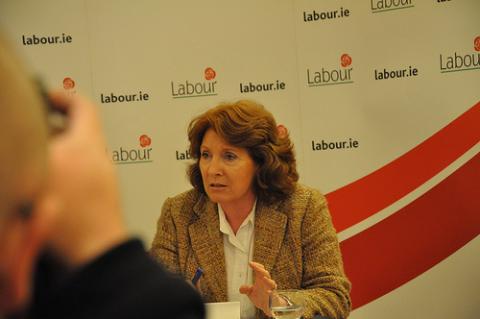Suicide prevention remains a low priority

Suicide rates have not decreased, despite improved treatments for mental illness, probably because those most at risk are not being identified and treated. In Ireland, Minister for State with responsibility for this area Kathleen Lynch may have the will to tackle the issue, but not the funding. By Vincent Browne.
There are at least one million deaths from suicide every year. More people die of suicide than die from murders and wars together. Over half of all violent deaths worldwide occur due to suicide. The overall rate of suicide worldwide has not declined in the past decade. In some countries there has been a slight decrease in suicides among younger and older men, but there have been compensatory increases for men in the 24 to 65 age bracket.
This is according to Annette Beautrais, a senior research scientist at Yale University specialising in suicide, and a native of New Zealand. Beautrais was one of the speakers at a conference on suicide last Friday in Dublin organised by Console, which provides a support service on suicide prevention, intervention and bereavement.
Suicide, she said, was primarily a problem for men, among whom suicide was four times more prevalent than women. Men are less likely than women to seek help for emotional and psychological problems, less likely to seek help and go to a GP, and more impulsive. Men are more likely to be unemployed, more likely to have access to lethal weapons, more likely to be less socially connected, and less protected by fatherhood than women are by motherhood and by the presence of young children needing care. She said past attempts at suicide are a major risk factor – 10 to 15% of those who attempt suicide later in fact kill themselves.
Between 60 and 90% of suicides are associated with mental illness. Those with depression have a 20 times higher risk of suicide than those not suffering from depression. The symptoms of potential for suicide are a sense of hopelessness, impulsivity, aggressive behaviour, anger, shame and humiliation.
In spite of improved treatment of mental illness in most countries, suicide rates have not decreased, probably because those most at risk are not being identified and treated, and because the treatments being used are not sufficiently effective.
Research has shown that incautious media reporting of suicide can cause contagion. Media guidelines have been developed in many countries, but the implementation of these has been “varied”. Intensive research is being funded by the US military because of the high suicide rate among soldiers returning from conflicts, and this may give improved insights into the causes of suicides and the most effective prevention strategies.
Beautrais said she thought the weakening of the bonds of social solidarity by the neoliberal political culture (my characterisation) and the emergence of social media have caused pressures which probably contributed significantly to the suicide rate. Suicide has also been promulgated as a “coping” mechanism in some cultures.
Beautrais identified hospital emergency departments as places where propensity to suicide might best be detected, but these are rarely equipped to deal with the symptoms of suicide, except where there has been an obvious attempted suicide.
Harry Barry, a GP in Drogheda, delivered a fascinating paper at the conference on what neuroscience can tell us about the prevalence of suicide among men. He said men in Ireland were culturally conditioned not to express negative emotions such as depression, shame, guilt, “unhealthy” grief, “damaging” anger and pathological jealousy. He said in Australia there had developed a “shed” movement which involved men joining other men in community activities where they were encouraged to talk, not face to face but shoulder to shoulder, about emotional problems when they arose.
Last week it was confirmed the head of the National Office for Suicide Prevention, Geoff Day, would step down. This is due in part to the State’s failure to fund the office properly. While suicide was briefly an election issue last February and several strategies were devised and implemented by Day, suicide prevention rates low in national priorities.
If even a small fraction of the resources poured into preventing banks from imploding were made available to prevent citizens from taking their lives, the rate would be much diminished.
Actually, the number of suicides did decline last year. Central Statistics Office provisional data for 2010 shows a total of 486 deaths by suicide, of which 386 were male and 100 female. This is a decrease of 41 (8%) on the record high in 2009 of 527 suicides. But oscillations in the number of suicides are not uncommon.
Minister for Health James Reilly was at the conference. Ten minutes late, he read a speech for 10 minutes – half an hour was allotted to him – and then he said he was leaving, which he quickly did. It was probably as well he did not speak for 30 minutes, as the 10-minute contribution was just the same old palaver.
Aside from the insult to the organisers and others present, his conduct was suggestive of indifference to the issue of suicide at senior ministerial level.
The Minister of State with responsibility in this area, Kathleen Lynch, is interested and has an as yet unannounced strategy. It may make a difference, but with inadequate funding...
Image top: The Labour Party.
